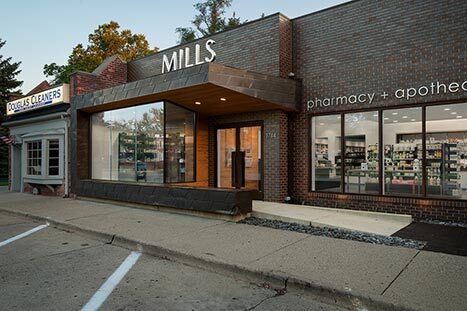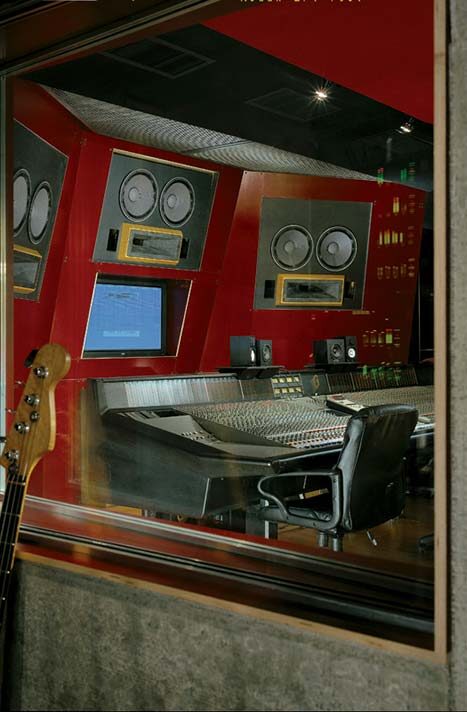“You must start off the way you would like to finish.”
The graduate students working in Christian Unverzagt’s U-M architecture studio heard those words of wisdom in 2003 from renowned Australian architect Glenn Murcutt. More than a decade later, the advice still rings true for Unverzagt, design director of M1/DTW, a Detroit-based multidisciplinary firm fusing design and cultural production.
“The advice was passed down to [Murcutt] from his father, and he was essentially saying , ‘If you do shoddy work, you’re only going to get shoddy commissions,’” says Unverzagt (pronounced “oon-fair-zot”), an assistant professor of practice in architecture at the Taubman College of Architecture and Urban Planning. “You’re not going to one day get good work if you’re not doing your best work now.”
These days, Unverzagt puts Murcutt’s adage into action each time he approaches a job. When a client hired the firm to create a conference table and reception desk for a Detroit radio station, M1/DTW pursued and won the entire contract to convert a loading dock into a meeting space and reception area. The team’s signature piece was the original commission: a 20-foot-long, 5-foot-wide table suspended from the ceiling at one end using a hand winch and thick chain repurposed from the original loading dock. (See slideshow below. Click on the images to enlarge. Images come courtesy of M1/DTW.)
That first job set off a lucrative chain reaction when a visitor to the radio station saw the distinctive table and hired M1/DTW to expand local recording studio 54 Sound (see slideshow, above). The owner wanted to offer a West Coast-quality space for Detroit-based rapper Eminem. The trick, Unverzagt says, was using unique materials that had “some authenticity you could connect with” but also were acoustically sound.
“When we were working on that studio we literally bumped into the owner of the building next door and were hired to redo their office,” Unverzagt says. “One of their clients was a hairdresser looking to go out on their own.” And before long, M1/DTW got their business too.
“What started as a call for two pieces of furniture resulted in all that work,” Unverzagt says in amazement.
“You must start off the way you would like to finish.”
The beginning
Unverzagt earned his undergraduate architecture degree from U-M during an economic downturn in 1994. He took a few years off then, interning for a spell at a corporate firm in San Francisco before returning to Ann Arbor to live with several friends who were pursuing art degrees at the Cranbrook Academy of Art.
“It seemed like it would be a more stimulating experience than the office,” Unverzagt says. “I’ve never just hung out with architects.”
He did some freelance work, and then started designing books for the Taubman College.
“It put me in a position where I was able to gain the experience that young architects are rarely able to get,” he says. “That is, seeing a project all the way through: designing and working with others to realize a finished product from start to end.
“By the time I went to graduate school it had been a year and a half and I had designed a half dozen books, maybe more. It set up the ability in me to execute, and I had a lot of design freedom.”
Unverzagt headed to the Southern California Institute of Architecture for his master’s degree. But instead of staying in Los Angeles to start a career post-graduation, he headed back to Detroit in 1999.
“There were so many opportunities for talented architects in L.A.,” he says. “There’s more money, and the client base is willing to take chances. It was truly a boom time [in 1999], but I felt I could have gone to any firm and they wouldn’t even have asked to see my work. They were mostly interested in bodies.
“It was much more enticing to come to Michigan and dig my teeth into the situation here.”
If you build it…
Unverzagt partnered with former Ann Arbor housemate Chris Benfield to form M1/DTW in 2000 and set up shop in Detroit. (Benfield, who received an MFA in printmaking from Cranbrook, left the firm in 2007.) The name’s a nod to the highway designation of Detroit’s famed Woodward Avenue and to the airport code for Detroit Metro Airport. That’s not to say there isn’t some confusion from time to time.
“We have a pretty funny collection of voicemails,” Unverzagt says. “We occasionally get calls for the M-1 rail project, people who have lost their luggage, or people who think we’re Detroit Public Works (DPW) and want to report a missing stop sign.”
Clients, however, are not confused by what M1/DTW has to offer. Since its inception, the business not only designed items but also had a hand in how those items were built.
“Despite being a small firm, the practice is pretty broad based,” Unverzagt says. “On the one hand, it’s classic interior architecture work. In the beginning we built many of the pieces ourselves, but now usually work closely with others to execute the work. However, the experience from design/build in the past helps us be better designers now, whether we are working on a custom piece of millwork or signage that helps someone figure out how to lock a sliding door in the bathroom. For us, all these touches contribute to someone’s experience. I’d like to think they add up.
“When we started the practice we wanted to participate in the conversation on the state of design at a national level. We never wanted to be characterized as just a Detroit firm. I think first and foremost the practice values the role of design and how it can make a difference in peoples’ lives. It may seem trivial, but even a hair salon is an active social space that affects many lives on a daily basis.”
Double life
Though he never intended to pursue a career in education, Unverzagt accepted what he thought would be a short-term offer from his undergraduate mentor, the professor for whom he was designing those books prior to graduate school. Years later, Unverzagt believes teaching at Taubman makes him a better architect. His approach is hands-on, not lecture-based, and the work keeps him connected to new technologies, trends, and timely discourse. He teaches two studios a year – including an introductory summer studio for graduate students, as well as an advanced graduate studio, similar to that which hosted Murcutt in 2003.
“Having my feet in both worlds, not locked into one or the other, and being able to try to bridge those worlds is beneficial,” Unverzagt says. “I’m often asked if my teaching benefits the practice. While I’m the first to admit that in many ways it certainly has, the question I can’t answer is, where might the practice be if I were not teaching?”
Possibilities
To date, much of M1/DTW’s practice has been for educational, institutional, and cultural organizations. These days, clientele is trending increasingly toward local entrepreneurs – those seeking a creative space to launch a new venture or expand an existing business. It’s a mindset Unverzagt readily embraces.
“Today’s entrepreneurs who are willing to commit know that design matters,” Unverzagt says.
Meanwhile, working in existing spaces can generate some of the most innovative designs, he notes. On a recent pharmacy expansion, his team initially was vexed, then inspired, by a set of immovable columns. (See slideshow, above.)
“It allowed us to think through [the client’s] desires,” he says. “We were able to orchestrate a spatial configuration where the pharmacist is at the heart of the action and could greet customers when they walked in from either entrance. The project wouldn’t have played the same if we had been given an empty lot.”
Working and living in Detroit has helped Unverzagt crystallize his own ambitions and desires. Jobs like the radio station, the recording studio, and the pharmacy have helped M1/DTW carve its niche in the area of adaptive reuse – that is, recasting and transforming existing spaces. Where others see vacant and abandoned buildings, Unverzagt sees budding restoration projects, potential renovations, and a very clear way to start how he’d like to finish.
“It’s a lot of fun teaching old buildings new tricks,” he says.










Cheryl Farmer - 1978
This is a very interesting article on re-use architecture. We are fortunate to have architects like Mr. Unverzagt helping to turn Detroit’s challenging abandoned and under-utilized buildings back into assets!
Reply
Rita Mitchell - 1985
Inspiring! It would be great if the Ross School of Business would consult with Mr. Unverzagt on their planned expansion. They could save a legacy tree, adapt and creatively use an existing building, and bridge that new building with the existing one. The “empty lot” approach may result in something soon to be outdated.
Reply